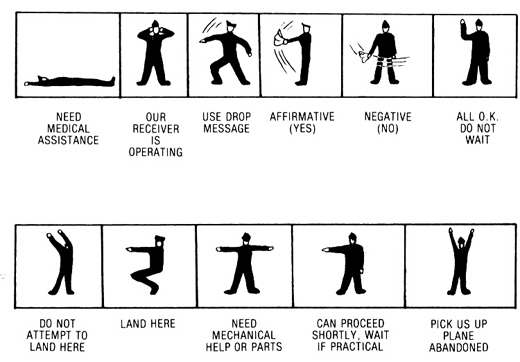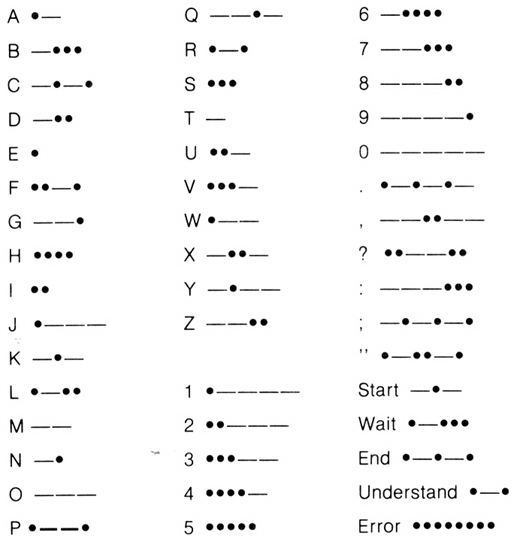Signaling: the call for help using international or other known distress signals. Outstretch your arms to each side and slowly raise and lower until seen. Fire three shots at 5-second intervals. Scream, yell, whistle, or pound six times in one minute followed by a minute of silence each time before repeating the signal. Make two large piles of dry branches, leaves, or grass, building each on a rock or log platform. Do not light until the rescue craft is within hearing or eyesight. Build a starter fire and keep it going so you can use hot coals to quickly start two bonfires. The three fires should form a triangle. Use your starter fire to send up smoke during the daylight hours. Damp green branches will generally give you all the smoke you need. Keep dry fuel on hand to enlarge the starter fire as required. In situations where you have access to any internal combustion engines (as in the case of a crashed aircraft), remember that motor oil burns slowly and makes a visible cloud of smoke. If there is no fire, little wind, and dry ground; stir the dust into a signal column when rescuers attempt to locate you. Use a signal mirror or tin can lid to reflect the sun into the eyes of the pilot of an aircraft or persons on ground or water. When using a can lid, punch an 1/8 inch hole in the center. A signal mirror already has a hole. Sight through the hole and move the mirror until the target is below the sun. When a sun spot from the hole hits your cheek, tilt the mirror or lid until the sun spot disappears into the hole. Keep repeating this procedure even if you cannot see the target. When signaling a short distance, write a message on a paper airplane and sail it to the intended recipient. The emergency letters SOS can be written, flashed, made from contrasting materials, smoke puffed, sculpted, stamped into snow or sand, or formed using shadows made from objects such as rocks or blocks of ice. You can tap signal SOS using Morse code; three short sounds (dots), three long sounds, (dashes), and three short sounds again. Wait 10 seconds then repeat. The emergency word mayday can be transmitted by voice or code. When and where available, use radio homing transmitters, emergency beacons, rockets, orange smoke flares, red signal flares, sea-marker dyes, the reflective surface of a space blanket, automobile warning flares, or whatever is available. At sea, another distress signal is an upside down flag or a square flag above and a round flag below. Use bright colors like yellow, red, or orange. Keep the flag flying at all times. A signal kite can be made from twigs, a handkerchief, and string. Long burning flares or fuses can be lifted into the air to create a light beacon. Improvise a ball-shaped balloon with the bottom end open. Use shirt material, a dried animal stomach, or whatever, and stretch it on a lightweight twig frame. Attach a candle-type holder just below the open end. Tie your string to the latter. Insert the flare or fuse in the holder and light. It will heat air inside the balloon causing it to rise in the sky until it reaches the end of the string.
Remember, after a crash, your best chance of survival is usually to stay with the wreck and signal for help. Always answer the distress call of others and note their location. Ask appropriate persons or rescue organizations to assist you with any call for help. In almost all cases, it is hazardous to attempt a solo rescue effort. To facilitate any rescue attempt, know the official U.S. Air Force ground-air codes which follow.
BODY SIGNALS

MORSE CODE
